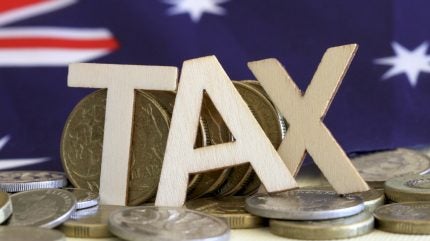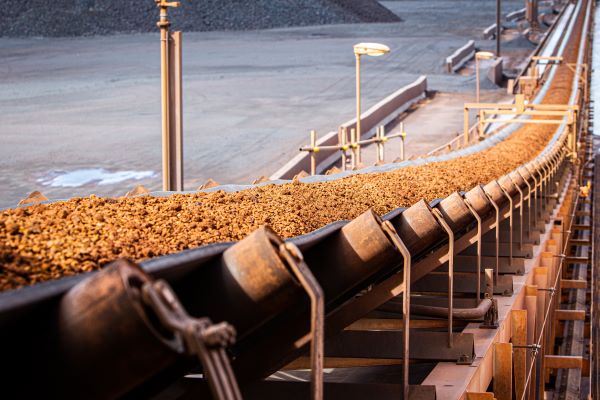
It is likely all democratic nations have issues with tax: the amount they want, the amount they take, and the amount individuals and organisations actually pay. But for Australia – which prides itself on being a low-taxing nation – the issue has long been a frustration.
Some would argue it has largely been so because of short-termism; a politicised, opinion poll-driven taxation ideology that ultimately results in an ever-shifting landscape that only ever tinkers around the edges. The fundamental imbalance and inadequacy of that system, again critics would say, has foundations that run deep and impact the everyday.
So, it comes as no surprise that in September a somewhat specious headline – which implied BHP claims to fund half of Australia’s hospitals – caused a stir, particularly among mining’s opponents.
The Australia-based mining giant actually said: “The A$14.5bn [$9.55bn] in taxes, royalties and other payments we made to Australian governments last financial year is around half what the federal government spends annually to run public hospitals across Australia.”
However, BHP has had a difficult relationship with Australian tax authorities. In 2018 it settled what was a 15-year dispute over unpaid taxes, having been found by the Australian Taxation Office (ATO) to be selling Australian-mined products through its then Singapore-based marketing hub subsidiary, BHP Billiton Marketing.
The company agreed to pay A$529m to settle the case and to bring the subsidiary into complete ownership under Australian regulation. Given the headline and BHP’s history, the story once again lifted the lid on the contentious issue of how much mining companies put back into a country.
Access the most comprehensive Company Profiles on the market, powered by GlobalData. Save hours of research. Gain competitive edge.

Your download email will arrive shortly
We are confident about the unique quality of our Company Profiles. However, we want you to make the most beneficial decision for your business, so we offer a free sample that you can download by submitting the below form
By GlobalData
In late 2023 figures from the ATO revealed that in the 2021–22 tax year almost a third (31%) of major corporations, and close to half of the biggest mining, energy and water companies, paid no tax at all. For mining, energy and water companies that was, though, an improvement on the previous year, which saw more than half pay nothing.
However, according to Roderick Campbell, research director at the Australia Institute, a public policy think tank, it is the system that needs addressing rather than the mining companies. The accusation levelled at the biggest miners is that they offload profits to shareholders, often overseas and out of the reach of authorities.
“Of course mining companies place their shareholders above paying taxes [and] so they should,” Campbell says. “The problem is that Australian state and federal governments are not prepared to take on the industry and stand up for the Australian public interest.”
That is a view the ATO counters. A spokesperson told Mining Technology it was committed to ensuring large corporates pay the right amount of tax. “Not only is it important economically, but we also know it has a positive influence on the attitudes and behaviour to paying tax across all segments.”
Taxing Australia’s mining, energy and water companies
Since 2016, the ATO says the Australian Government has provided funding for a Tax Avoidance Taskforce, helping to “secure more than A$32.7bn in additional tax revenue from multinational enterprises, [and] large public and private businesses”. Perhaps in a nod to Campbell’s criticism, it went on: “The Tax Avoidance Taskforce has a focus on the energy and resources sector, including commodity exports and marketing hub arrangements.”
In its five-year trends analysis to 2022 report, published a year ago, the ATO stated there had been an increase in “the number of entities in each industry in the corporate transparency population”, which is key to the rise in income and tax paid across all segments.
“The exception is Australia’s mining, energy and water segment,” it said, “where commodity prices and export volumes have been key contributing factors in income and tax paid.”
All industries had grown their tax payable – including mining – the ATO says. Together with energy and water, the sector paid the largest share of all tax payable, significantly rising in 2021–22 to A$42bn, up from A$32bn in 2020–21 and A$25bn the previous year.
It is notable that of the sectors listed in the report, wholesale, retail and services – which are grouped together – generated close to double the income of mining, energy and water, yet paid just A$17.5bn in taxes in the year ending 2022.
Last year the agency released its ninth corporate tax transparency report. It found that although all sectors had increased tax payable, mining’s continued to increase, with a significant rise in tax paid reflecting strong commodity prices. At the time ATO deputy commissioner Rebecca Saint said: “The 2022 income year was the first year that the mining sector paid more tax than all other sectors combined.”
In fact, mining paid more tax in 2021–22 than the total tax from all sectors over the past three years combined.
Using the Organisation for Economic Cooperation and Development (OECD) justified trust concept, which applies objective evidence to conclude a taxpayer paid the right amount, the ATO spokesperson says: “As a result of our actions, voluntary compliance in the large market segment is the highest it has ever been, reflecting the success of the ATO’s justified trust programme and our ability to avoid tax disputes through innovative products and early engagement with taxpayers.”
Potential improvements for Australia’s mining royalty system
The ATO acknowledged, however, that some corporations continued to engage in profit shifting and tax avoidance. In a less-than-veiled warning, the spokesperson told us: “Our ability to invest our resources to scrutinise the affairs of these businesses only intensifies as more and more taxpayers demonstrate high levels of compliance.”
Current programmes or initiatives do not go far enough, says Campbell. “The big problem is not that mining does not pay much money to Australian governments under the current system; the problem is that the mining industry has captured governments and bureaucracies and uses this influence to ensure that the system stays broken.”
The recent appointments of former high-profile politicians, government advisors and public servants to senior mining roles, joining “a conga line” of others highlights this, he suggests.
“If they [politicians, advisors and public servants] play nice with industry, a sweet gig like that could be theirs too,” he adds. For some, such appointments raise the question of over familiarity between the mining sector and its regulators.
Campbell believes that cosiness was on show last year during a consultation into changes to the Northern Territories royalty revenue system. The previous regulation required miners to pay a minimum royalty of 1–2.5% of production value, or a profit-based royalty of 20% of the net value of sales less costs and losses, whichever was greatest.
Campbell says that system had contributed to a significant increase in royalty revenues, consistently more than A$300m a year. “Suddenly, the Territory Government appoints a panel full of mining executives to review royalty settings,” he adds.
The conclusion of that consultation was rather than applying profit-based royalties, the Mineral Royalties Bill 2024 includes an ad valorem royalty scheme, a move welcomed by the mining sector. It argues that such a framework, which came into force in July but only applies to mines that become operational from 2024 onwards, encourages investment, benefits the local economy and will actually likely increase royalties paid.
How mining benefits Australia
It is not just taxes that mining offers Australia. Calling it the “backbone of the economy”, Minister for Resources and Minister for Northern Australia Madeleine King told the Committee for Economic Development of Australia’s State of the Nation conference in June that for those involved, the resources industry is a source of highly skilled and well-paid work, generating economic activity in the regions, royalties that help build roads and hospitals, and revenues that contribute to defence forces.
The Minerals Council of Australia (MCA) reinforced that message in late September when it welcomed news of Australia’s second straight budget surplus, this time A$15.8bn, adding it was the result of “the ongoing strength and reliance of Australian mining”.
In a statement, Tania Constable, MCA CEO, said that despite lower market prices, major mining commodities “continued to make large contributions to Australia’s export earnings”. The government puts iron ore’s contribution at A$138bn, metallurgical coal at A$54bn, thermal coal at A$37bn and gold at A$33bn in 2023–24.

BHP would also defend its value to Australia. Although it received some criticism, the company would argue its contribution is significant. In the September report for which it was blasted, it said its total economic contribution was A$52.9bn in the 2024 fiscal year.
This was spent with its supply chain, through grants and social investments, Australia-based employee wages, and dividend payments to Australian shareholders and investors. “BHP remains one of Australia’s largest taxpayers,” it added, “and we expect to fund around six per cent of total Australian company tax in the 2024 financial year”.
Campbell offers an overall perspective: “About 2% of Australian jobs are in mining, 300,000 out of a workforce of 14.5 million. Roughly 5% of government revenue comes from royalties and taxes from mining, so 95% comes from the rest of the economy.”
In Australia, mining has always stirred debate, but add the thorny issue of tax and the voices only get louder. Whatever your view, the one certainty is that conversations will only continue.
Time will tell what the next five years will bring; but mining, of course, will go on in Australia – buoyed by a new round of proposed credits – and the question of whether the sector pays what it should will remain a talking point. The best answer, at least for now, is it depends on how you look at it.
Representatives of government departments, industry bodies and companies (including BHP) were invited to share their views, many chose not to.



